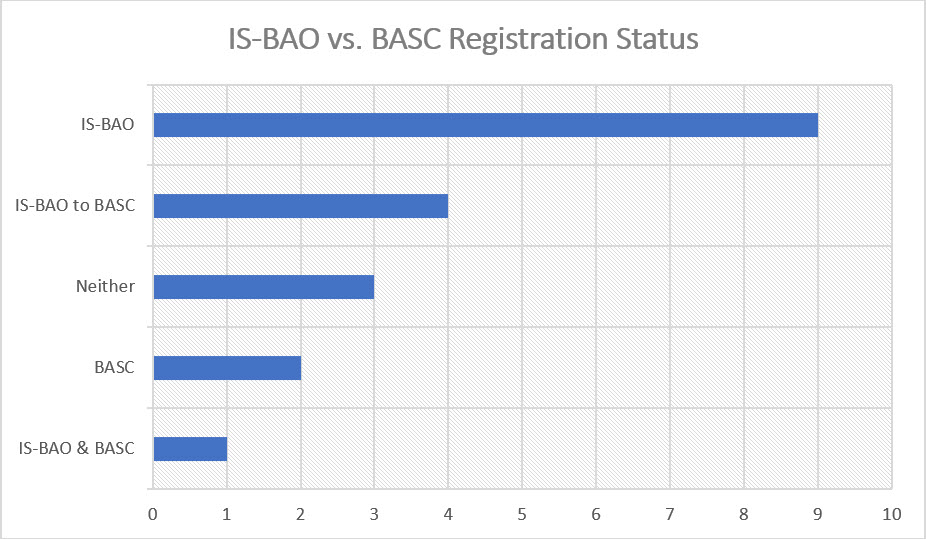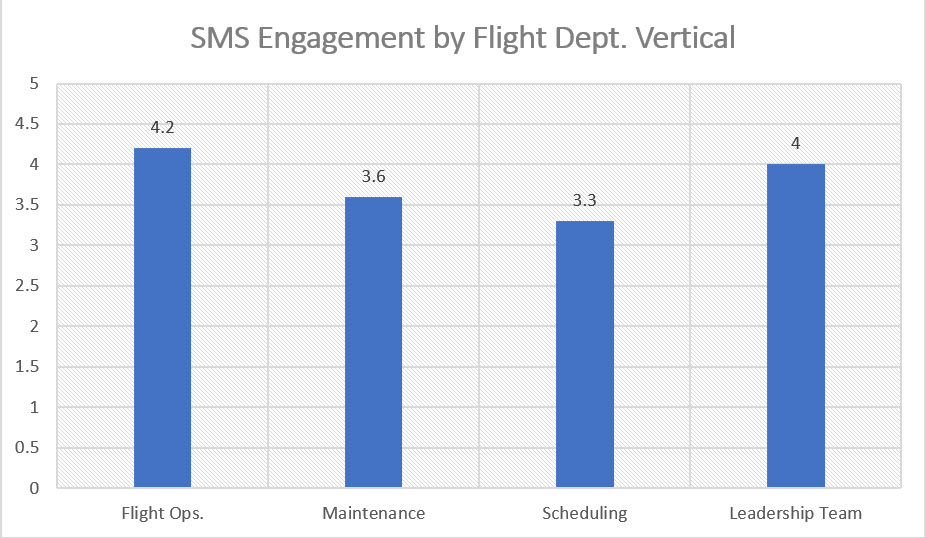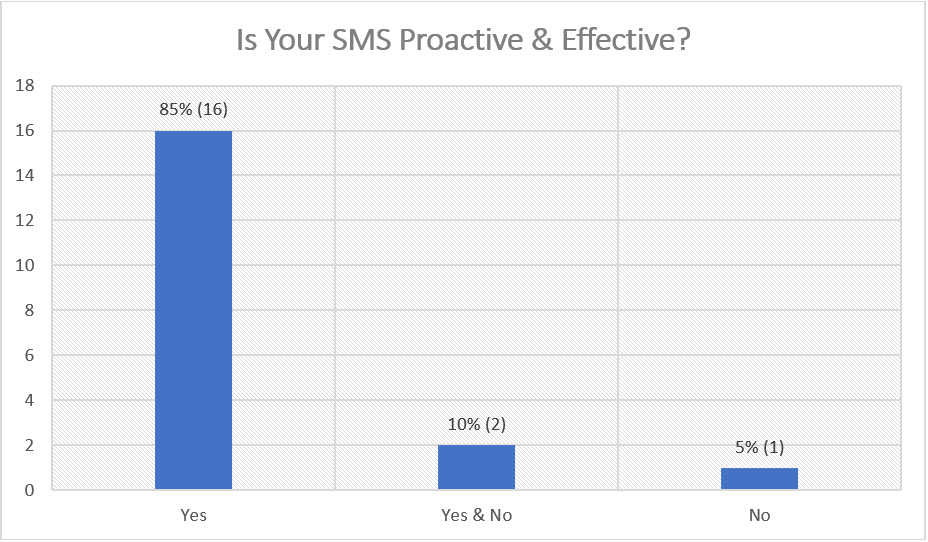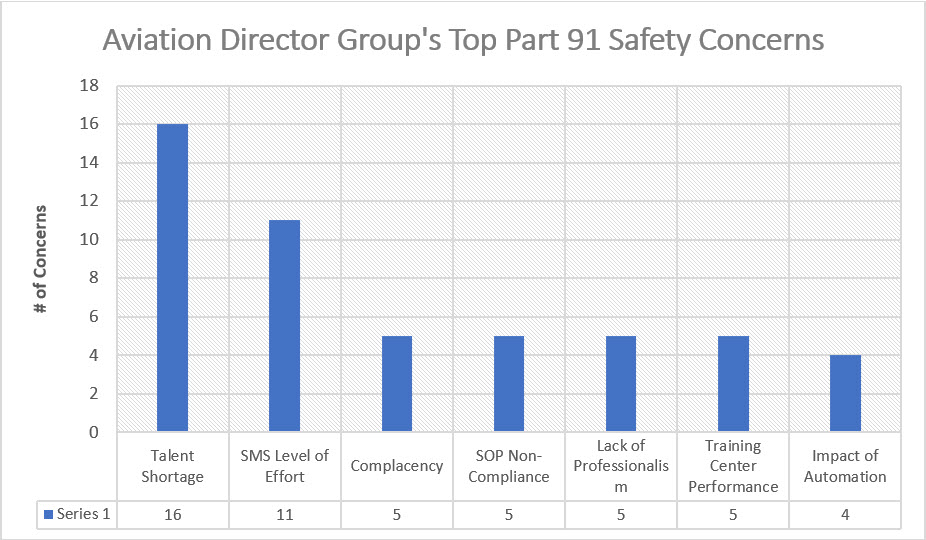The FAR Part 91 sector of aviation has long enjoyed an admirable record of safety. Business aviation has always been perceived as a very safe and efficient way to fly.
Much of this safety record has been driven by the pursuit of safety practices by various hard working industry groups, among them the NBAA Safety Committee, the Bombardier Safety Standdown, and others.
Also, pursuit of registration to the latest industry standards of safety and risk mitigation, primarily IS-BAO (International Standard for Business Aircraft Operations) and BASC (Business Aviation Safety Consortium) have contributed to business aviation’s noteworthy safety statistics.
But much has happened in the world over the last few years that has impacted business aviation. Significant among them is a decrease in engagement caused by the downturn in flying during COVID and the outflow of talent to the airlines. These events have put some serious cracks in the foundation of business aviation.
So, what has been the impact of recent world events on business aviation, especially as it relates to safety? What is the current state of safety in the business aviation industry sector?
To get the latest perspective, we asked a group of nineteen (19) current Directors of Aviation in the business aviation sector what they thought. They were randomly selected. All are in charge of flight departments for instantly recognizable parent companies, operating a fleet of one or more business jet aircraft.
We asked them to respond to five (5) questions relating to business aviation safety and their safety concerns.
What we learned is both enlightening and alarming.
Here’s what they told us.
Question 1 – Are you Registered to IS-BAO or BASC?
This question probed the degree to which the survey group formally embraces the latest industry standards for safety and risk mitigation.

Of the group of nineteen (19) flight departments, all but three were registered to either IS-BAO or BASC. Of the three (3) that were not registered, two (2) had active efforts underway to achieve IS-BAO Stage 1 registration. Four (4) of the departments had switched from IS-BAO to BASC. Of those registered to the IS-BAO standard, many were at the Progressive Stage 3 level. One flight department was registered to both IS-BAO and BASC.
Question 2 – What is the Level of Engagement to the SMS Within Your Flight Department?
This question sought visibility into how well the Safety Management System (SMS) is embedded within the flight department by functional group. We asked the Aviation Directors to rate the level of engagement by flight department vertical (functional group) on a scale of one (1) to (5), where one (1) was the lowest level of engagement and five (5) was the highest.

The feedback was fairly consistent across all survey respondents. The highest level of engagement was from Flight Operations, likely due to the pilot-centric focus of the registration standards. Of note was that the Leadership Teams ranked lower than the pilot groups, raising questions about Safety Leadership within today’s Part 91 flight departments.
The Maintenance and Scheduling functions followed, with Scheduling indicating the lowest level of engagement on average.
Question 3 – Is Your SMS Proactive and Effective?
This question probed how effective each Aviation Director thought their SMS is at finding and adequately addressing safety concerns.

Sixteen (16) of the nineteen (19) respondents answered ‘yes,’ indicating that their SMS was proactive and effective. One (1) respondent indicated that their SMS was not effective, but this was from a flight department currently working towards IS-BAO Stage 1 registration.
Two (2) of the respondents answered ‘yes and no’ to the SMS effectivity question, indicating that the answer to the question for them was situational.
Many of the Aviation Directors who answered ‘yes’ to this question at the same time expressed some degree of reservation about the effectiveness of their SMS. These reservations included complacency and low utilization, therefore causing the overall effectiveness of the SMS to be below the level to which the department aspires.
Our judgment, after carefully dissecting the responses, is that many of the ‘yes’ responses should have more accurately been placed in the ‘yes and no’ category, likely yielding close to an even split between the ‘yes’ and ‘yes and no’ categories. Another factor behind the high degree of ‘yes’ responses could be the reluctance, even under the promise of confidentiality, to reveal that their SMS is not as effective as it should be.
Question 4 – What are the Barriers to SMS Implementation?
This question aimed to get to the ‘what’s in the way’ aspect of effective SMS deployment.
It is interesting to note that many of the respondents answered ‘yes’ to Question 3, above, indicating that their SMS was proactive and effective, but also listed barriers to its effectiveness in their response to this question.
The primary barriers reported to be in the way of effective SMS implementation are as follows.
- Complacency Towards Use of SMS – Several Aviation Directors expressed that battling complacency to the SMS process takes an enormous amount of effort and requires constant reinforcement. Complacency was highlighted by many respondents as the most significant barrier to SMS implementation.
- Lack of Trust in the Culture – Concern was expressed that not all team members in the flight department trust the ‘Just Culture’ promise of non-punitive Hazard Reporting.
- Non-Uniform SMS Deployment – Concern was expressed that the SMS needs additional emphasis in some of the flight department verticals, especially Maintenance and Scheduling. There is a propensity, especially within Maintenance, to fix and problem but not report it, thereby precluding the adoption of preventative measures.
- Workload – There was concern expressed that the difficulty of utilizing the various reporting platforms (SMS, FOQA, etc.) is a hindrance to SMS deployment. The level of effort to input the data was seen as overly burdensome. This concern came primarily from Safety Managers below the Aviation Director level. Several survey respondents allowed their Safety Managers to participate in the survey, which provided an excellent and additionally insightful level of feedback.
- Excessive Time Horizon to Spot Trends – Unlike the Part 121 commercial airlines, concern was expressed that in the Part 91 environment it may take many several quarters of FOQA data or SMS Reports to discover that something that has been seen once is indeed an operational trend.
- Safety as a Collateral Duty – Because the oversight of safety programs in the Part 91 world are largely collateral duties, limitations are placed on the pace of SMS implementation. It was expressed by several Aviation Directors that safety programs should be managed by a dedicated safety professional on an FTE basis, but in their flight departments, due to headcount limitations, this is simply not an option.
- Escalation of ‘The Smaller Stuff’ – The concern was expressed by several Aviation Directors that Safety Reports are often not submitted for ‘the smaller stuff’ due to fear of escalation and the barrage of unnecessary emails, the back and forth of paperwork and resulting administrative burden that follows.
Question 5 – What are the Most Significant Part 91 Safety Concerns in Part 91 Today?
This is the most alarming part of the survey feedback.
The responses to this question came back largely in freeform style, but when nominally grouped, here’s what the Aviation Directors told us are their primary concerns about safety in the Part 91 world today.

Talent Shortage – The most significant safety concern in Part 91 operations today in the minds of the nineteen (19) Aviation Directors surveyed was the critical shortage of talent. There were sixteen (16) comments in this regard received, the largest number of any. There is significant concern about the airlines hiring experience away from Part 91 operators. It is becoming increasingly difficult to replace the pilots who are leaving for the airlines with an equivalent level of expertise. A ‘talent vacuum’ exists due to the high rate of turnover. Time in aircraft type is (for both pilots and maintenance) getting lower. Turnover and transition in the flight departments is adversely impacting trusting work relationships. Less experienced personnel are now handling the critical tasks. Labor attrition adversely impacts the ability to maintain operational continuity. Higher rates of attrition are seen to risk cohesiveness within the flight department, introducing elevated levels of risk even with high standards, strong processes, and well-defined procedures in place. The departure of highly experienced labor in an ever tightening labor pool has resulted in less experience across the entire Aviation system (ATC, Flight Operations, Technical Operations, Ground Handling, Aircraft Movement, FBO’s, MRO’s, International Service Providers, Fuel Vendors, etc.) The belief was expressed that the talent shortage is a factor into why we are experiencing higher incident rates in the operational environments. Additionally, workforce changes in the Training environment have jeopardized the ability to meet required and supplemental training needs. All of these factors place increased stress on what was an already overstressed system, requiring increased oversight to successfully mitigate the higher levels of risk.
Level of Effort Required to Maintain a Highly Functioning SMS – This was the second most critical safety concern expressed by the Aviation Directors, with eleven (11) overall comments. All flight department team members with safety-related responsibilities hold other primary positions in the department, which puts their time at a premium and limits their ability to focus on SMS-related activities. Allocating the bandwidth to manage all the safety programs (IS-BAO, BASC, FAA Voluntary, FOQA, ASIAS, ASAP, LOSA, TEM, etc.) is a significant challenge. The lack of a full-time Safety Manager was seen as a critical safety concern. The thought is held by many Aviation Directors that the Safety Manager position should be filled by a trained professional, not someone to whom it is assigned as a part-time job. The perception also exists among many Aviation Directors that an SMS is seen as unwieldy and overly complicated. Some indicated that many flight department team members do not feel that the SMS benefits outweigh the efforts. It was noted that the SMS systems in many flight departments are not meaningful. Labor shortage was seen as adversely impacting the ability to develop and sustain a strong SMS. Overall, it is the opinion of the Aviation Director group that there is an overall lack of commitment to an SMS and Safety Programs across the entire Part 91 industry sector.
Complacency – It was noted that there is a lack of focus on the fundamentals within the Part 91 industry today, which adversely impacts safety. This was seen as caused by many factors, significant among them the lack of a ‘forcing function’ to implement as SMS. Complacency was also noted in the oversight of external vendors and service providers, such as FBOs, Charter Operators, MROs, Contract Pilot Services, etc.
SOP Non-Compliance – Alarmingly, many Aviation Directors cited a lack of strict adherence to stated Standards and enforcement of those Standards as a significant safety concern today. Many believe that this is driven in part by the heavy turnover now experienced in business aviation. SOP Non-Compliance covered the gamut from checklists and aircraft limitations to lack of discipline to sterile cockpit requirements.
Lack of Professionalism – A disturbing number of comments came back from the Aviation Directors that there is a serious lack of the pursuit of excellence or continuous improvement in the Part 91 industry today. The attitude prevails of ‘doing only the minimum required,’ and the belief that “I only need to do enough to get by.” This attitude is a serious significant safety concern.
Training Center Performance – Virtually everyone in the group of Aviation Directors indicated that the quality of training within the industry has declined. The Training Centers are suffering the same lack of qualified staff that the flight departments are. One Aviation Director noted that they had different ground and sim instructors for each session of their most recent recurrent training. Also noted was a lack of flexibility to customize training scenarios and profiles.
Impact of Automation – It was noted that the automation of aircraft systems is notably decreasing basic (perishable) flying skills. The increasing complexity of operations, both in aircraft technology and in the mission and range of international operations, was noted as a significant safety concern as well.
Is It Time for a Wake-Up Call?
The feedback from the Aviation Director group should make us all sit-up straight in our chairs.
Three (3) of the top seven (7) safety concerns, ‘Complacency,’ ‘SOP Non-Compliance,’ and ‘Lack of Professionalism’ have plagued business aviation for decades. Any of them could cause a serious incident or accident. Articles, books, and blogs have been written about them. Podcasts, industry working groups and seminars have focused upon them. But they’re still with us. Well into the 21st century. They are all attitudinal in nature and they are all preventable. We need to stop the ‘race to minimum criteria’ and instill the pursuit of excellence into business aviation. We need to knock these three (3) concerns off the list once and for all.
Where Do We Go From Here?
The information received from the Aviation Directors is ‘hot off the press.’ We all recognize the gravity of their concerns and what’s at stake if we do not address them head-on.
But what are we going to do about it?
There is nothing more important in aviation, business aviation or otherwise, than to continuously improve the level of safety.
Nothing less than a full-court press is required to get these attitudinal threats to safety off the list. Do we have the courage to do so?
